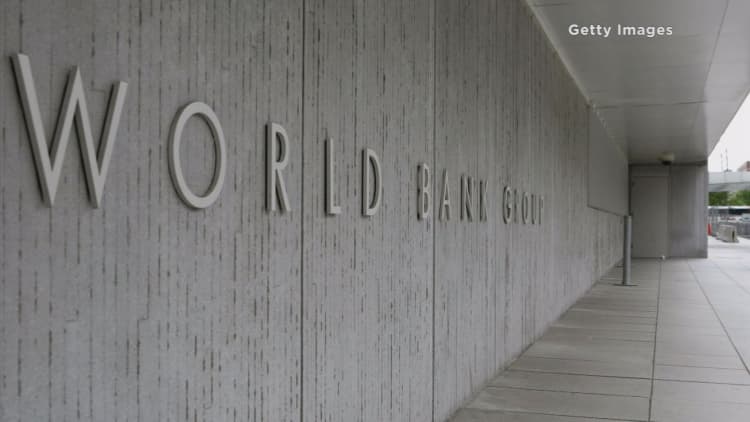
Demand for lending from the World Bank has risen to levels "never seen outside a financial crisis," according to the latest research by the global lender to developing countries.
"As developing countries continue to face strong economic headwinds, demand for lending from the World Bank has risen to levels never seen outside a financial crisis," the World Bank said in a statement published on Monday.
It said lending was now on track to climb to more than $150 billion in support between the fiscal full-year of 2013 and the current fiscal year. Furthermore, the bank said that demand for lending from middle-income countries – in the face of renewed economic challenges amid a global slowdown – was set to rise further.
In the bank's last fiscal full-year, 2015, lending by the International Bank for Reconstruction and Development (the IBRD, whose parent is the World Bank Group) "was the highest it has ever been outside a financial crisis at $23.5 billion," the bank said.
It added that it expected full-year 2016 "will easily eclipse that record, with lending projected to rise above $25 billion."
The World Bank has two specific objectives; one is to end extreme poverty and the other is to promote shared prosperity. It also advises countries on implementing reforms aimed at creating growth.
It has become widely known as the source of financial assistance to developing countries around the world but a rising demand for money shows that these countries are suffering the effects of a wider global slowdown, the bank's president said.
"We are in a global economy where growth is expected to remain weak, so it is critically important that the World Bank play our traditional role of helping developing countries accelerate growth," World Bank Group President Jim Yong Kim said in the statement.
"We have an historic opportunity to end extreme poverty in the world by 2030 but the only way we can achieve this goal is if developing countries – from middle-income to low-income nations – get back on the path of faster growth that helps the poorest and most vulnerable."
The World Bank forecasts global economic growth to reach 2.9 percent in 2016, picking up at a slower pace than previously expected from an estimated 2.4 percent in 2015. However, it noted that "conditions have generally deteriorated further since the start of the year."
To put the rise in demand in context, a decade ago in 2006, IBRD lending stood at $14 billion and then demand from middle-income countries rose to $44 billion in 2010, the peak lending year of the financial crisis. Rather than see lending fall after the crisis, however, it has continued to rise.
When the World Bank's management reviewed IBRD's financial capacity in the fiscal full-year of 2010, during the crisis, it was predicted that by full-year 2013, "post-crisis lending would drop to pre-crisis levels of $15 billion, which was the average level in real terms for the decade prior to the crisis," the bank said. Current lending levels are expected to surpass those forecast by at least $10 billion.



